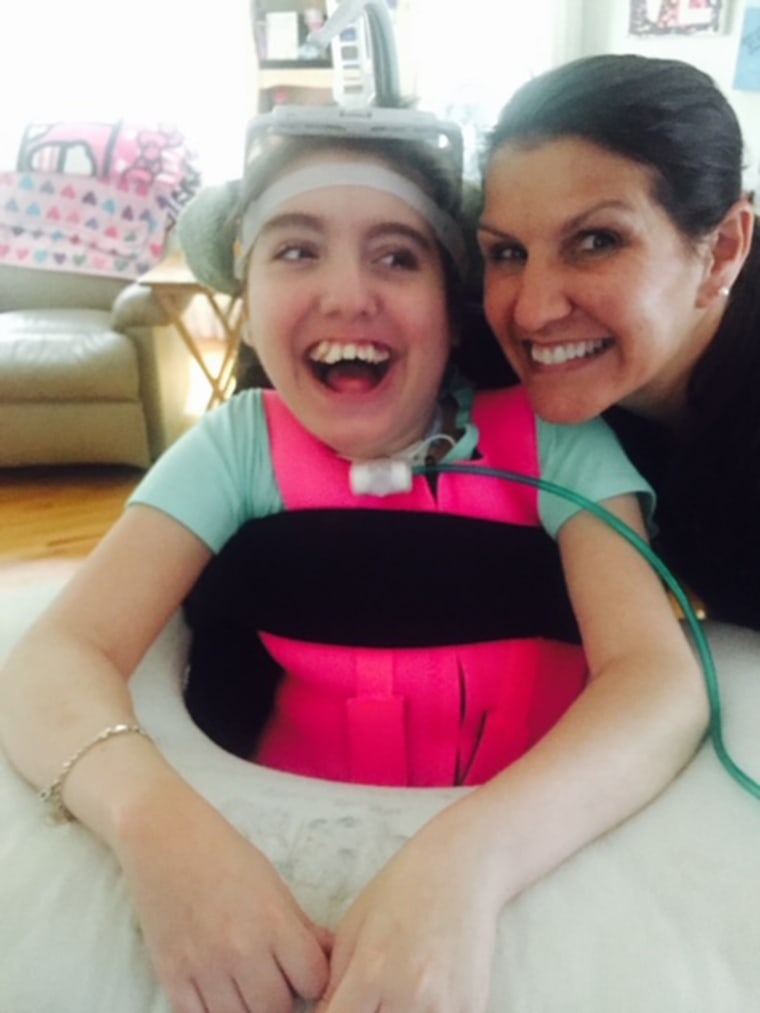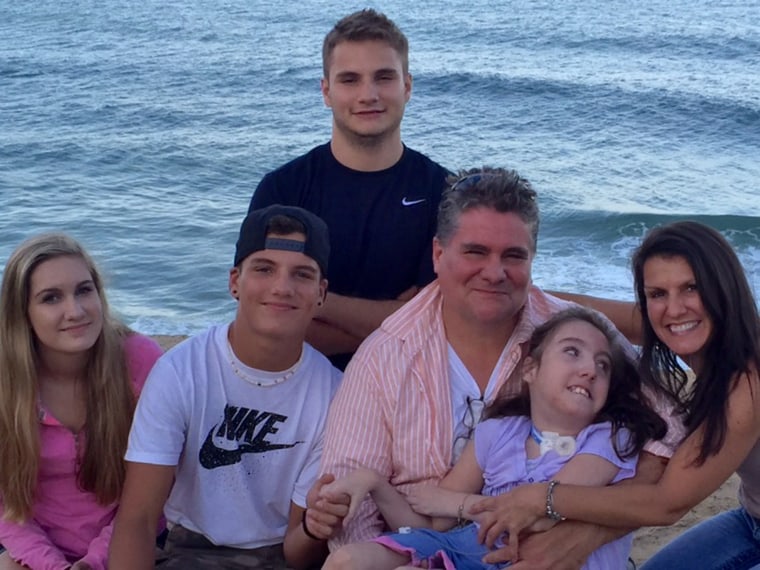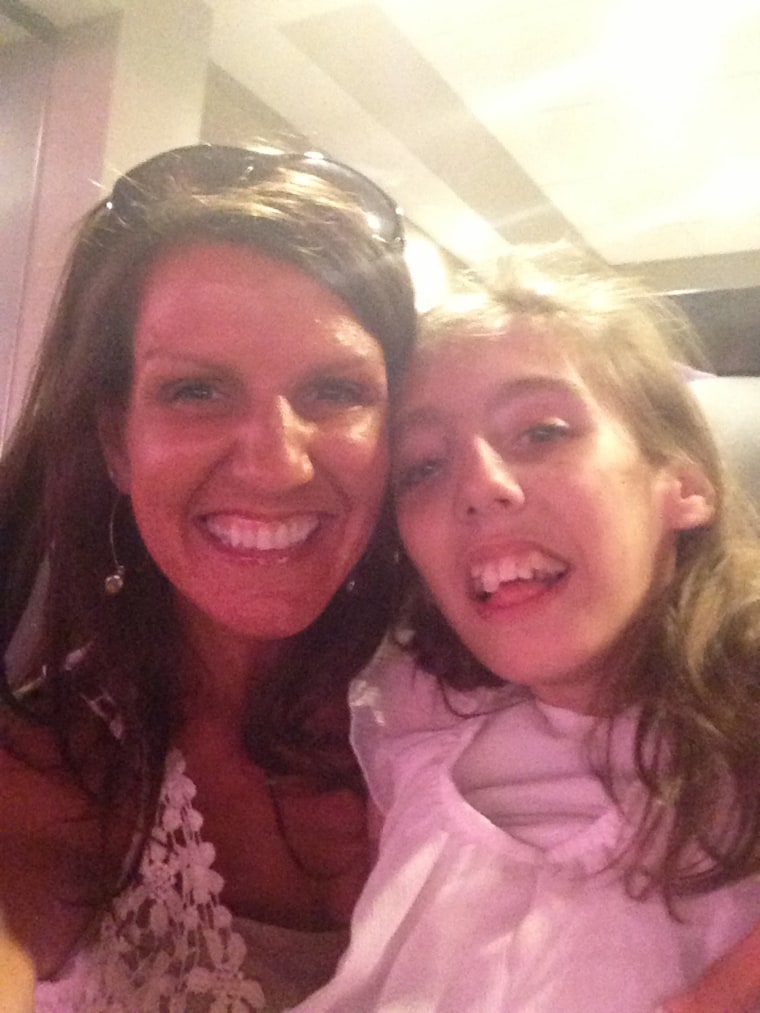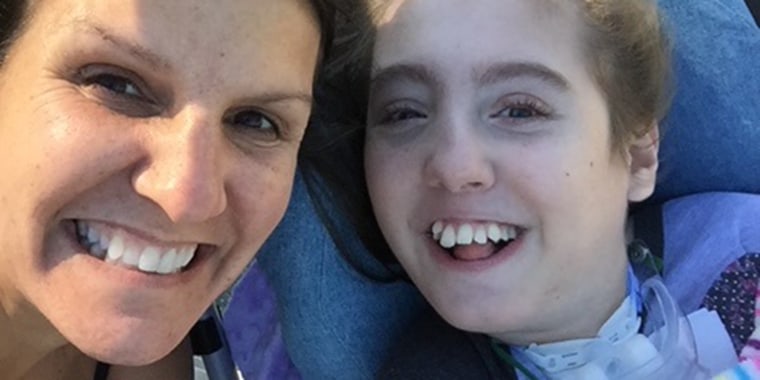Kelly Heger’s daughter Jillian, now 26, was the fourth child in the world to be diagnosed with the ultra-rare condition aromatic l-amino acid decarboxylase (AADC) deficiency. There are fewer than 150 cases in the world. With an AADC deficiency, the brain can’t properly create neurotransmitters, dopamine and serotonin, which can lead to low muscle tone, movement disorders, developmental delays and problems with the nervous system, such as inability to regulate temperature.
As Heger, who lives in Bridgewater, Massachusetts, navigated the medical system, trying to find answers about Jillian’s condition, she realized she needed more background and attended nursing school to earn her RN. Now 54, Heger has become an advocate for AADC and founded the AADC Family Network, which connects families that have loved ones with the condition.
This interview has been edited and condensed for clarity.
After Jillian was born around Christmas in 1995, I started having fever and chills, and we returned to the hospital. As my husband walked around with her, he bumped into a neonatal nurse, and he mentioned that Jillian always felt cold. The nurse tried taking her temperature, but it was so low that she thought her thermometer was broken. She tried again and it was still low. For the next month, Jillian lived in the hospital and underwent what was casually referred to as a million-dollar workup. But they found no answers, and doctors sent us home.
At home, baby Jillian struggled to regulate her body temperature and slept for more than 20 hours a day. I knew something was wrong and often told her doctor. But they reassured me that she just needed time to grow and develop. Then her eyes began doing something unusual, rolling upward and spasming — what I now know is called an oculogyric crisis. Her body stiffened as her back arched while her neck was rigid. She struggled to breathe. Finally, the doctor agreed that she needed to see a specialist for some sort of diagnosis.

Meanwhile, I started researching. I combed through the library, looking up terms that described Jillian’s conditions, such as floppy body, rigidity or droopy eyes. I felt that I needed to know as much as I could about her health.One day, Jillian experienced a severe oculogyric crisis, and I called the children’s hospital for advice. They recommended calling 911 and having her admitted to the emergency room. My husband and I took her, and coincidentally the doctor on call had diagnosed the first case of AADC deficiency in the United States two months earlier. That’s how we learned what Jillian had.
At first, learning what was wrong felt somewhat like a relief. But then the reality set in that there wasn’t much known about this condition. The first two children diagnosed with it lived in England and were walking and talking, so we had some hope. Sadly, it soon became clear that Jillian was significantly sicker.
At every missed milestone, my heart felt heavy. I needed to provide care to Jillian 24/7 while still navigating all the difficult information the doctors shared. I felt like I needed a better understanding of all the terms, medicines and therapies Jillian needed. I also felt like I needed a language to better communicate with the doctors treating her. So I started my pre-requisite classes to attend nursing school.
Juggling school and motherhood was challenging, but I felt determined. My husband was extremely supportive, but caring for four children, including one who was very sick, and studying felt overwhelming. I didn’t sleep much. It took me seven years to complete my degree, but I do not regret the all-nighters and juggling childcare plans for it.

I am still amazed by Jillian. She has a beautiful spirit and is fun, energetic and witty. She loves being a part of everything. When someone makes a joke, she’s quick to laugh, and she intently follows conversations with her eyes. She vocalizes but does not verbally speak.
While we enjoy time with her, I still face challenges sometimes as her caregiver. Most days she wakes up nauseous after a night on a ventilator, so she’s gagging and gulping for air. I begin respiratory care, such as cough assist, handbag ventilation, to clear her airway and help her breathe with ease. While I help, I chat with her and try to remain upbeat. She loves seeing smiles, and when I’m upbeat and positive, we have a better day. I am often assisted by my two German shepherd dogs that I’ve trained to do some service work. When Jillian experiences tremors, she sometimes pulls her tracheostomy tube out, so the dogs hold her hands down to help protect her. She can’t move her body, so I have to position her.
After she showers, I change the dressing for her g tube (for supplemental feeding), check her PICC line (for administering medications) and put her in her chair. To communicate, she uses a device that tracks her eyes. So she might say she wants to listen to music, watch a movie, go outside or blow bubbles. Then we have to do respiratory care again, and she goes to sleep, which can be restless for Jillian.

Soon after Jillian was diagnosed, I started a foundation for AADC, called the AADC Family Network. We raise awareness and funding for research into AADC. We also want to support children to live at home with their families, like Jillian does. Thanks to some of our support, a gene therapy treatment is showing some improvement in clinical trials, and children in them are learning to crawl, walk and talk. Seeing how this impacts other families is breathtaking. Even though Jillian will not likely benefit from this therapy, I’m happy that others might.
